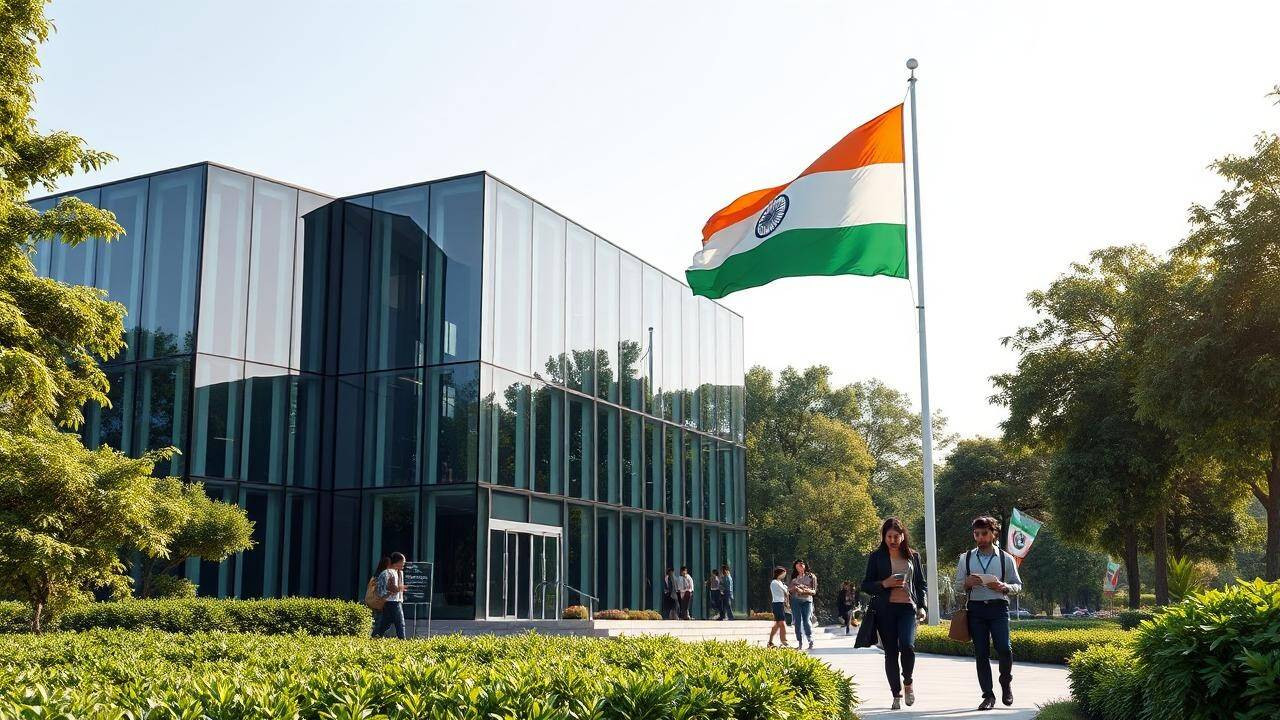Indian IT giants are strategically diversifying beyond the US market, establishing nearshore centers and pursuing acquisitions in regions like Australia, the Middle East, and the Nordics. This expansion aims to capitalize on rising technology spending in these areas, mitigate US market volatility, and address evolving data sovereignty concerns.
Beyond Silicon Valley: How Indian Tech is Painting the World in Code
For decades, the American tech scene, particularly Silicon Valley, has been the lodestar for the global technology industry. But winds of change are stirring. Indian IT powerhouses are increasingly setting their sights on new horizons, venturing beyond the well-trodden paths of North America and Europe. The buzz now? Australia, the Middle East, and even the Nordic countries are becoming strategic battlegrounds in the global tech talent war.
So, what’s fueling this shift? Several compelling factors are at play, painting a picture of a more diversified and dynamic global tech landscape.
The Saturation Point: Finding New Growth Avenues
Let’s face it: even the most fertile ground can become over-farmed. The US market, while still undeniably important, is reaching a point of saturation for many Indian IT firms. Intense competition, evolving client demands, and fluctuating economic conditions mean companies need to scout for fresh pastures. Think of it like a gardener diversifying their crops – you can’t only rely on one type of harvest.
Australia, with its robust economy, strong government support for digital transformation, and a growing demand for skilled tech professionals, is proving particularly attractive. The Middle East, driven by ambitious diversification plans away from oil and gas, is also beckoning with large-scale infrastructure projects and a keen interest in adopting cutting-edge technologies.
Following the Talent: Expanding the Global Footprint

Talent is the lifeblood of the tech industry, and attracting and retaining top professionals is a never-ending quest. By expanding into new regions, Indian IT firms are tapping into previously unexplored talent pools. This allows them to build more diverse and resilient teams, fostering innovation and creativity.
Moreover, a global presence can be a powerful draw for ambitious individuals seeking international experience. Working on projects in Australia, the Middle East, or the Nordics offers a unique opportunity for career growth and cross-cultural collaboration. This ability to offer compelling career paths becomes a critical advantage in the battle for the best and brightest. Consider also that these regions may have specific skillsets or specialized knowledge crucial for next-generation technology development.
Shifting Client Demands: Becoming Truly Global Partners
Globalization isn’t just about companies expanding their reach; it’s about clients doing the same. Multinational corporations are increasingly seeking IT partners with a global footprint, capable of providing seamless support and solutions across different time zones and regions. Indian IT firms, with their established track record of delivering high-quality services, are well-positioned to capitalize on this trend.
Furthermore, different regions have unique needs and priorities. The Middle East, for example, might be particularly interested in smart city solutions and cybersecurity, while the Nordics may be focused on sustainability and renewable energy technologies. By establishing a local presence, Indian IT firms can gain a deeper understanding of these specific requirements and tailor their offerings accordingly. This localized approach fosters stronger relationships with clients and allows for more effective collaboration.
Risk Mitigation: Diversifying Geopolitical Exposure
The world is an increasingly interconnected but also uncertain place. Geopolitical tensions, economic fluctuations, and regulatory changes can all impact businesses. By diversifying their geographical exposure, Indian IT firms are reducing their reliance on any single market and mitigating potential risks. This strategic diversification makes them more resilient to unforeseen events and better prepared to navigate a complex global landscape.
Think of it as diversifying your investment portfolio – you wouldn’t put all your eggs in one basket, would you? Similarly, spreading operations across multiple regions reduces vulnerability and ensures long-term sustainability. This is not just about mitigating risk; it’s about building a more robust and future-proof organization.
Why This Matters: The Future of Global Tech
The expansion of Indian IT firms into new markets is not just a regional phenomenon; it signals a broader shift in the global technology landscape. It highlights the growing importance of emerging economies and the increasing interconnectedness of the world. It also demonstrates the dynamism and adaptability of the Indian tech industry, its readiness to embrace new opportunities and challenge the status quo. The rise of tech jobs and companies globally provides an additional opportunity to build innovative products and services. Learn more about the opportunities that cloud computing provides by visiting our [Cloud Computing Services](internal-link-to-cloud-computing-page) page.
Ultimately, this trend is likely to lead to a more competitive and innovative global tech ecosystem, benefiting both businesses and consumers alike. The competition will drive innovation, foster collaboration, and ultimately lead to the development of better technologies and solutions for a wider range of people. The code being written in India is now shaping the digital future in unexpected corners of the globe.







